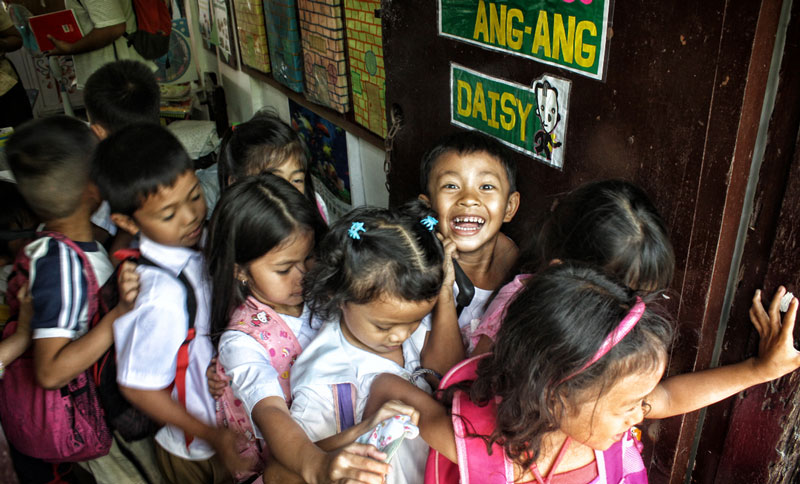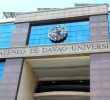“As this school year marks the second year of implementing government’s new K+12 program, it only adds to the already chaotic public school system in the country.” – Elenito Escalante, public high school teacher & President of the Alliance of Concerned Teachers of the Philippines Davao Region Union
By CHERYLL D. FIEL
DAVAO CITY, Philippines — Public schools open this June 3 with the same problems it faces in every opening of school year. But how worse is it with the K+12 program now signed into law?
As this school year marks the second year of implementing government’s new K+12 program, it only adds to the already chaotic public school system in the country, said public high school teacher Elenito Escalante from the Daniel R. Aguinaldo National High School (DRANHS).
Escalante said DRANHS will have to accommodate an estimated 1,800 new students for Grade Eight this school year.
In K+12, high schools are required to offer Grade Eight. Escalante said he estimates the 1,800 Grade 8 students comprise 30 sections, which the school has to provide additional classrooms for the additional students.
While the needs of DRANHS will be easily provided by the region’s Department of Education (DepEd) as it is one of the schools located in the urban center, he doubts schools in far-flung rural areas in provinces are given support.
“I’m sure the problem of shortage of classrooms will be much more acute in these areas,” Escalante said.
Learning interrupted
Every school year begins with such problems in facilities, shortages in classrooms, textbooks, broken chairs and poor toilet facilities compounding the public school woes.
Last school year 2011-12, the shortage of classrooms was pegged at 152,569 according to DepEd.
Classrooms in public schools are usually built poorly. Some are too small and could not accommodate an average of 50 students. They are also built too close to each other, with thin walls that divide each room, making one hear the noise in the other room.
Ventilation is another problem. If the weather is hot and humid, it distracts the students, Escalante said, pointing out that classrooms are cramped with many students.
Such conditions affect the learning ability of students and worsen the work condition of teachers, Escalante lamented.
Even facilities such as toilets and sinks are important. When these are dilapidated however, it becomes the parents’ or the teacher’s lookout to find ways to repair them, Escalante pointed out.
With these problems in public schools, Escalante said parents strive to make both ends meet just to be able to send their children to private schools, where the facilities are much better.
Passing the buck to parents
The DepEd started its yearly campaign National Schools Maintenance Week, popularly known as “Brigada Eskwela,” to get parents to help repair and improve school facilities in preparation for June.
While Brigada Eskwela helps in the preparation, Escalante said it is not right for government to pass the burden to parents the matter of readiness of school facilities.
“Parents would of course be ready to help, because they want their children to be able to have an environment conducive to learning. But it should be the government who needs to find a way to solve these perennial school opening woes which are getting worse each year,” Escalante said.
He added that government should be disabused of the idea that the responsibility of maintaining public school systems facilities lies mainly on the parents. “The parents are burdened enough. It is supposed to be the lookout of the government to provide for these needs,” Escalante said.
Asked if teachers can request additional budget from the DepEd to fix such problems, Escalante said teachers thought they would rather ask from parents because the process of requesting from DepEd takes too long.
Besides, the DepEd is plagued with problems in its budget. The department may have the biggest chunk in the national budget at PHP 238.8 Billion this year. But this does not correspond with the size of the department which has one of the biggest number of employees with 600,000 teachers and thousands more in administrative offices.
Escalante said even with 600,000 teachers, this number is still not enough to teach the growing number of student population each year.
Lack of teachers
Escalante said the DepEd is still mulling of hiring teachers for the new grade levels this school year under the K+12.
“They should have hired teachers long before the onset of classes. It should have already been put in place ahead of time, but I don’t think this is already being done,” Escalante said.
The lack of teachers was already seen at the start of K+12 last school year when kindergarten classes were required.
Kelly Carumba who teaches in Francisco Dizon Elementary School sees the same problem this year. In their school, for instance, kindergarten teachers handle two shifts per day, at two to three hours per shift. The teachers receive PHP 3,000 per shift.
Carumba said the salary is certainly way too low for this kind of work. Besides, PHP 6,000 is not a living wage, and teachers have to spend for their own transportation and other school needs such as chalk, instruction devices and classroom enhancement.
These kindergarten teachers, Carumba said, are also hired as contractual employees.
“We hope they will be prioritized for hiring as regulars by the DepEd,” Carumba said.
Kapitan Tomas Monteverde Elementary School, one of the biggest schools in Davao, had 300 kindergarten students with only one regular teacher handling all of them. The school principal, accordingly, had to hire additional “volunteer teachers.”
The country has a poor student-teacher ratio in the public school system with one teacher handling an average of 60 students, which is two times more than the international standards of one teacher for 30 students.
Not so new problems
The introduction of new curriculum under the K+12 also creates problems, but these are not so new at all according to Carumba.
He said the teaching method in Grade Two is required to be done in the mother tongue beginning this school year. Yet the DepEd has to provide new textbooks.
He lamented that the new set of textbooks given to Grade Two students last year could no longer be used as subjects are to be taught in the mother tongue. “With new programs replacing the old, the old textbooks are no longer useful,” he said.
Carumba said that so far, only workbooks have been issued, not textbooks. “For now, teachers are taking initiatives in teaching,” Carumba said.
Escalante and Carumba said such problems show the government is not ready to implement the K+12 program. Carumba added that there are fundamental problems on the country’s basic education system that the K+12 has not addressed.
DepEd says the K+12 program was implemented to improve the country’s basic education system by adding two years in high school. Escalante however doubts this.
“It may look good on paper,” Escalante says, “but looking deeper what does it do?”
Escalante said offering technical and vocational curriculum in the additional two years in high school is not necessary and could only add up to the burden of parents.
“If they want high school graduates to develop skills in welding, hair grooming and other vocational, technical skills, where does government intend to put them in the future, when our country doesn’t have the factories and industries?”
As members of the teachers and education sector employees group, Kahugpungan sa mga Magtutudlo ug Kawani sa Edukasyon sa Mindanao-Alliance of Concerned Teachers, Escalante questions the K+12’s intention to create more workers for the country’s “cheap labor export” policy.
“They are exploiting our youth for cheap labor for other countries. Is that what they want with our youth?” Escalante asked. (Cheryll D. Fiel/davaotoday.com)
ACT, Department of Education, DepEd, K+12, K+12 Law










